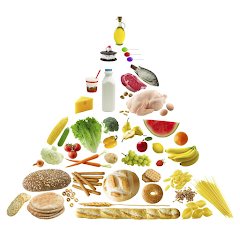The Blood Pressure: Understanding and Managing Your Health
Introduction
Do you know what blood pressure is? It's an essential measure of our health, yet many people are unaware of its significance. In this article, we will delve into the topic of blood pressure, exploring its meaning, importance, and how you can manage it effectively. So let's dive right in and gain a deeper understanding of this vital aspect of our well-being.
1. What Is Blood Pressure?
Systemic pressure refers to the force exerted by circulating blood against the walls of blood vessels, mainly arteries. It is expressed as two numbers: the systolic pressure over the diastolic pressure. Cardiovascular pressure is measured in millimeters of mercury (mmHg) and is represented as systolic/diastolic. For instance, a cardiac pressure reading of 120/80 mmHg is considered normal for adults.
2. The Two Components of Blood Pressure
Pulse pressure consists of two components: systolic pressure and diastolic pressure. Systolic pressure refers to the force exerted on the arterial walls when the heart contracts and pumps blood into the arteries. Diastolic pressure, on the other hand, represents the pressure in the arteries when the heart is at rest between beats.
3. The Role of Blood Vessels
Blood vessels play a crucial role in regulating arterial pressure. Arteries, which carry oxygen-rich blood away from the heart, have muscular walls that can constrict or dilate, influencing blood flow and pressure. When the blood vessels narrow, vascular pressure increases, and when they widen, BP decreases.
4. Understanding Systolic Pressure
Systolic pressure, the higher number in a cardiac pressure reading, reflects the maximum force exerted on arterial walls during a heartbeat. It is influenced by factors such as the strength of the heart's contraction, the volume of blood being pumped, and the flexibility of the arteries.
5. Decoding Diastolic Pressure
Diastolic pressure, the lower number in a cardiovascular pressure reading, represents the pressure exerted on arterial walls when the heart is at rest between beats. It indicates the resistance in the blood vessels and the ability of the arteries to relax and fill with blood.
6. What Is Considered Normal Blood Pressure?
Normal vascular pressure is defined as reading below 120/80 mmHg. However, blood pressure can vary throughout the day due to various factors like physical activity, stress, and even the time of day. It is important to monitor your blood pressure regularly and consult a healthcare professional if you have any concerns.
7. The Impact of High Blood Pressure
High blood pressure, also known as hypertension, is a condition where the force against arterial walls is consistently too high. If left untreated, it can lead to serious health complications, including heart disease, stroke, kidney problems, and even vision loss.
8. Causes and Risk Factors
There are several factors that contribute to the development of high circulatory pressure. Some of the common causes include an unhealthy diet, lack of physical activity, smoking, excessive alcohol consumption, obesity, genetics, and age. It is important to address these risk factors to maintain healthy pulse pressure levels.
9. Lifestyle Modifications to Manage Blood Pressure
Making positive lifestyle changes can greatly impact arterial pressure control. Adopting a healthy and balanced diet, reducing sodium intake, limiting alcohol consumption, quitting smoking, engaging in regular physical activity, and managing stress are all key steps to maintaining optimal cardiac pressure.
10. Dietary Changes for Better Blood Pressure Control
Certain dietary modifications can have a positive impact on hypertension. Incorporating fruits, vegetables, whole grains, lean proteins, and low-fat dairy products into your meals can contribute to better heart health. Additionally, reducing the consumption of processed foods, saturated fats, and sugary beverages is beneficial.
For more details Click Here






